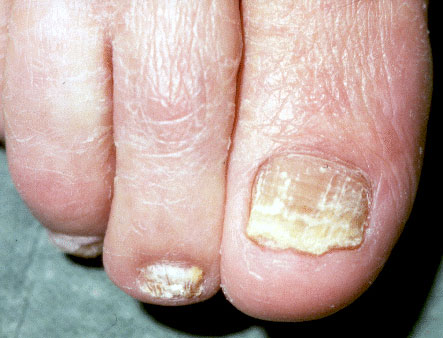Tinea Unguium Causes, Symptoms, Diagnosis and Treatment

What is Tinea Unguium?
Tinea unguium is a fungal infection that affects the nails (onychomycosis). It does not typically occur in childhood. This type of infection starts to occur in puberty and the frequency increases with age. Tinea unguium occurs most often in toenails (tinea pedis). A culture of the nails can help confirm the diagnosis. Fungal nail infections are difficult to treat because most topical treatments do not penetrate the nail plate.
Causes of Tinea Unguium
There are many different causes of fungal nail infections, and each cause has a treatment of its own. Although many of the causes of a fungal nail infection are preventable, some risk factors increase the likelihood of developing it. You’re more
likely to develop a fungal nail infection if you:
- Have Diabetes
- Have a disease that causes poor circulation
- Are over age 65
- Wear artificial nails
- Swim in a public swimming pool
- Have a nail injury
- Have a skin injury around the nail
- Have moist fingers or toes for an extended time
- Have a weakened immune system
- Wear closed-toe shoes, such as tennis shoes or boots
Symptoms of Tinea Unguium
A fungal infection of the nail may affect part of the nail, the entire nail, or several nails.
Visible Signs
- Visible signs of a fungal nail infection include:
- Scaling under the nail, which is called subungual hyperkeratosis
- White or yellow streaks on the nail, which is called lateral onychomycosis
- A crumbling corner or tip of the nail, which is called distal onychomycosis
- Flaking white areas on the nail’s surface, which may include pits in the nail
- The appearance of yellow spots at the bottom of the nail, which is called proximal onychomycosis
- Loss of the nail
- A distorted nail that may lift off from the nail bed
- An odor coming from the infected nail
- A brittle or thickened nail
Diagnosis of Tinea Unguium
Fungi are responsible for only about one half of nail dystrophies, the diagnosis of onychomycosis may need to be confirmed by potassium hydroxide (KOH) preparation, culture or histology. Psoriasis, lichen planus, contact dermatitis, trauma, nail bed tumor and yellow nail syndrome may be mistakenly diagnosed as onychomycosis
Treatment of Tinea Unguium
Over-the-counter products aren’t usually recommended to treat nail infections because they don’t provide reliable results. Instead, your doctor may prescribe an oral antifungal medication, such as:
- Terbinafine (Lamisil)
- Itraconazole (Sporanox)
- Fluconazole (Diflucan)
- Griseofulvin (Gris-Peg)
By : Natural Health News




